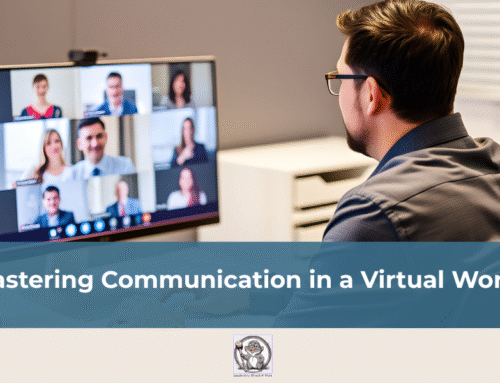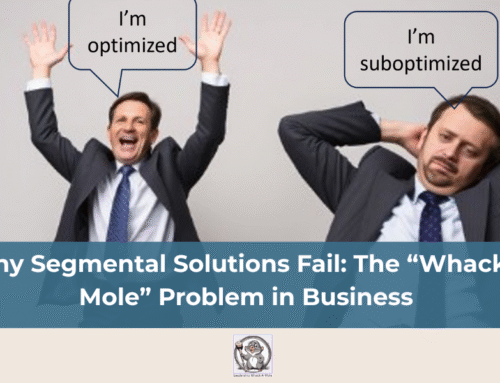
By Jeff Fierstein
Overview
Two years ago, I was approached by a nonprofit organization facing significant financial and operational challenges. Among the issues raised were ineffective fundraising, siloed departments, and a toxic workplace culture. A newly appointed CEO sought to reverse these trends by leading a culture transformation initiative. I was engaged as an external consultant to help guide and implement this change.
The chapter in question was part of a national nonprofit network of 50 chapters. At the time, the Chapter ranked last in performance and had been placed on probation by the national office. The CEO believed that transformation was achievable with a strategic and data-driven approach to cultural change.
Objective
The central objective was to shift the organizational culture—fostering collaboration between departments, reducing destructive behaviors, and creating a mission-aligned, high-performing environment. This transformation would be supported by employee engagement, leadership development, and performance metrics, and would unfold over two years.
Strategic Assumptions
Working with the Senior Leadership Team (SLT), we defined key assumptions to guide our change strategy:
- Employee involvement is critical for successful change.
- Strengthening collaboration between Operations and Development departments would enhance overall performance.
- All employees, including leadership, must commit to and model new behaviors.
- Ratings from national headquarters serve as a key performance indicator.
- Continuous learning and feedback are essential.
- Change efforts must align with the organization’s strategic plan and mission.
Methodology
We implemented a structured change management process that included:
- Defining Clear Goals and Metrics: Organizational and departmental objectives were established and communicated organization-wide.
- Employee Climate Surveys: Annual surveys measured organizational climate across dimensions such as communication, trust, and engagement.
- Team Assessments: Using The Five Dysfunctions of a Team framework, teams identified and addressed barriers to collaboration.
- Behavioral Reinforcement: Operating norms were developed, training was delivered, and recognition programs were introduced.
- Individual Assessments: All employees completed the DiSC profile to improve communication and self-awareness.
- Strategic Planning: A strategic plan was created to ensure long-term alignment and sustainability.
Implementation Highlights
- Survey and Feedback Loops: The 57-item Climate Survey provided a baseline and guided annual action planning. Focus groups helped interpret results and shape priorities.
- Behavioral Training: All employees participated in workshops based on The Five Dysfunctions of a Team. Team norms were created and reinforced in monthly all-hands meetings.
- Leadership Coaching: The CEO and SLT received weekly coaching, enabling continuous reinforcement of cultural expectations.
- Performance Incentives: A new financial bonus structure was tied to organizational performance metrics.
Get More Tools From the Resource Bank
Results
Organizational Outcomes
Across a four-year span (extending beyond the original two-year plan), employee satisfaction improved markedly, as measured by the Climate Survey. Year-over-year gains were evident in all categories, and organizational performance followed suit:
- Operational efficiency improved by 12% in Year 1.
- Fundraising (Development) increased by 18% in the same period.
Low-rated survey items—related to promotion opportunities and compensation—were addressed through targeted goals and initiatives led by the SLT.
Team-Level Progress
All teams completed a team effectiveness assessment using the Lencioni model. By Year 2, scores improved significantly in all five dysfunction categories (Trust, Conflict, Commitment, Accountability, Results). These assessments informed team-level planning and performance reviews.
Individual Development
DiSC profile assessments enhanced understanding of communication styles. Teams used these profiles to improve collaboration, reduce conflict, and enhance productivity. A composite assessment of the SLT revealed a strong presence of Steadiness (S) and Influence (i) styles, which helped guide communication and leadership strategies.
Cultural Impact
By the end of Year 4, the Chapter had developed a reputation for excellence. The organizational climate was visibly more positive, collaborative, and focused on continuous improvement. The chapter was formally recognized by the national headquarters as a model for turnaround success.
Leadership as the Catalyst
Crucially, the transformation was driven by the vision and commitment of the CEO. Her leadership—marked by clarity, consistency, and personal accountability—was instrumental in aligning the organization around shared values and goals. Without her stewardship, this culture change would not have achieved the scale or speed of success realized.
Conclusion
The Chapter’s cultural transformation underscores the power of structured, participatory change. A focused, data-driven plan—executed with discipline, transparency, and full organizational commitment—enabled this chapter to not only reverse its decline but emerge as a top-performing unit within its national network.
For a free copy of the 9-page case study summary – with detailed Methodology, Actions, Graphs, and Results – type the word “Transformation” in the Comments section below and submit. We’ll email your case study to you.
To learn more about the book Leadership Whack-A-Mole: Actionable Strategies for Leadership Challenges, peruse this website or click on the banner below.





Transformation